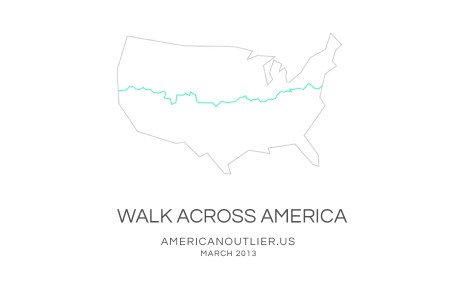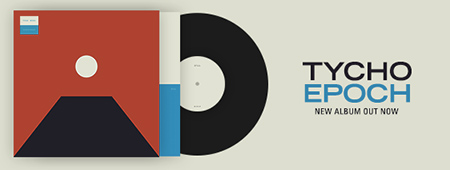The Work of Alexandre Deschaumes
Love this guy’s work. Find more in his portfolio here: Alexandre Deschaumes
Love this guy’s work. Find more in his portfolio here: Alexandre Deschaumes
Here are the lesser-known photos from NASA’s Apollo program, too sun-burned or out-of-focus to make it to mainstream, uncovered after many hours of browsing the Apollo Archive.
For more NASA related inspiration, check out the NASA tag. As an added bonus, here’s Neil Armstrong serving you some cake:
I stumbled on Benoit Paillé the other day and was so totally captivated by his photography. Each photo tells a detailed story.
I think that photography doesn’t represent reality, but creates it.
In this series he used a plastic light square with 300 LED lights that were linked to a dimmer. He used fishing line to hang it from the trees. I’m not sure how he got it to hover over the dirt and rocks.
My approach towards landscape is to incorporate a poetical component that will trigger an emotional response linked to the form and the light. I wanted to create something that wasn’t really a landscape but rather something engineered, so as to move the viewer in a different way.
You can view the rest in this series here
and the rest of his portfolio here
Posted by: Seth Hardie | Instagram: @hallwood

Hey ya’ll!
I wanted to do a little shameless plug here for my new project/adventure I’m attempting. In March 2013, I’ll be heading to the east coast where I will dip my feet in the Atlantic and keep walking westward until my feet soak in the Pacific.
That’s right, I’m walking across America and I’m inviting people to follow my new blog as I journal, photograph and record my journey. And no, I’m not Forest Gump’ing.
I’ll also be doing exclusive posts here at ISO50 when I get the chance. One of my objectives is to interview local American artists and photograph them and their works. So if anyone who reads this blog knows an awesome artist of any discipline that’s along my route please contact me!
Check it out:

If you’re even remotely serious about editing photos on your phone, Photoforge 2 will quickly become your mainstay. Here’s why:
It’s the best, fully-featured photo editor for mobile.
After years of trying every photo editing app across Android and iOS, I have yet to find anything better. Like Photoshop, it gives you full control over your image with features you thought you could only get on desktop. It’s not for quick edits, so if you’re in one-stop filter kind of mood, or less familiar with terms like “adjusting curves” or “soft light,” Afterglow is probably the way to go. If you are familiar with those terms, it’s easy to spend hours fiddling away on the go just as you would in front of a bigger screen at home. Just be careful not to get car sick.
Layers, layers, layers.
If anything, layer support is what sets this app apart from the rest – you can easily overlay other photos, create 50% Gray layers to add film grain, textures & vignettes, or drag to re-arrange layers as you please. It even supports layer masking, so you can edit-out imperfections or localize adjustments similar to how you would in Photoshop.
Powerful color curves.
Yep, same color adjustments as you would expect in popular photo editing software for desktop. In fact, many of the Instagram filters (Rise, Amaro, Sierra, Willow) were initially designed with this app, using this feature.
You can always undo with the edit history list.
As project management goes, Photoforge 2 preserves every stage of your edit across multiple projects. The one downside is how much space this takes up on your phone. Since we’re dealing with multiple versions of many full-resolution photos, this app will quickly become the heaviest app you have installed. Be sure to delete the photo projects you won’t be revisiting.
Grab the app for iPhone & iPad on iTunes for $3.99: Photoforge 2 [iTunes Link]
This iconic Bubble series was created by fashion photographer Melvin Sokolsky for the Harper’s Bazaar 1963 Spring Collection.
Haunted by a particular image from Hieronymous Bosch’s ‘The Garden of Delights,’ Sokolsky experienced a re-occurring dream in which he saw himself floating inside a bubble across exotic landscapes. Inspired, he quickly used the idea for the series. The Bubble was crafted to emulate a Faberge Egg, for which Sokolsky had great admiration for its design and workmanship.
Complicated and unrealistic at first, he was able to realize his dream. Sokolsky commented:
“With the awareness that I was prone to live in my own head much of the time, and inclined to severe self-criticism, I began to have doubts whether I could create images on film that reflected the images in my mind’s eye.”
The Bubble was produced in ten days of Plexiglass and aircraft aluminum for the hinged rings. After a successful test run, Sokolsky was off to Paris to shoot the Spring Collections for Harper’s Bazaar. The challenge was to position a telescopic crane at each location from which the Bubble would be suspended. Using his favorite model at the time, Simone d’Aillencourt, she would get into the Bubble that was suspended a few feet off the ground, (hinged at the top like a Faberge Egg) so that it could easily swing open for entry. After being locked in safely and able to breathe due to the space between the hemispheres; the Bubble was raised into the final position. Sokolsky describes one particular event:
“There were times when this choreographed dance turned into a Laurel and Hardy comedy. The morning we shot on the Seine, the Bubble was lowered overzealously into the water, flooding it up to Simone’s ankles, and in turn ruining an important pair of designer shoes.”
Turning out to be an amazing adventure for him, Sokolsky was praised and congratulated for his unconventional yet triumphant work. He had ignited the world of fashion photography with his innovative style.
Between 1909 and 1915, Russian photographer/chemist Sergei Mikhailovich Prokudin-Gorskii traveled across his homeland, using the relatively new technology of color photography to document what he saw. Outfitting a private train car with his own dark room equipment, Prokudin-Gorskii captured landscapes, buildings, and people in a series of breathtaking images. Given the rarity of vibrant color photography from this era, Prokudin-Gorskii’s work is all the more striking: Without sepia tones’ time-distancing effects, the characters in these images feel right there, full of stories of a bygone era and a diverse, colorful culture on the brink of revolution.
Posted by: Todd Goldstein // Twitter: @armsongs
In terms of digital reproductions, there really isn’t much of Roloff Beny’s work online. So when I came across this Wine & Bowties post with gorgeous scans of Roloff Beny’s work in India from 1969, you bet I was totally stoked! (note: There are more images on their blog, so follow the link posted above)
From the write-up:
“…Beny was a world traveler, and India is one of a number of his works which could effectively be described as a love letter to the place it documents. One of the most impressive examples of his eye for color, scenery and natural beauty, India finds Beny exploring a place with no shortage of gorgeous landscapes, architecture, and rich culture. In some ways, these images read like an idyllic Westerner’s portrait, an aesthetically idealized version of a complex place…”
Posted by: Owen Perry | Instagram: @circa_1983